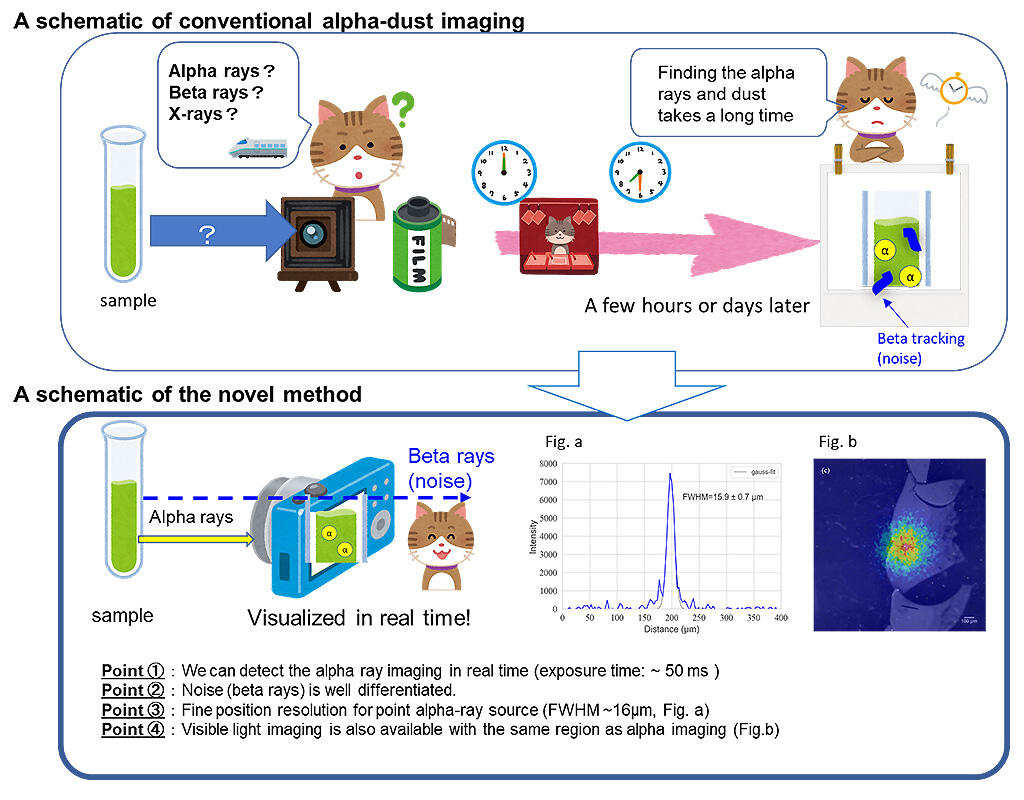Yuki Morishita, a researcher at the Japan Atomic Energy Agency, Sector of Fukushima Research and Development, Fukushima Research Institute, Collaborative Laboratories for Advanced Decommissioning Science, Remote System and Sensing Technology Division, in collaboration with Associate Professor Shunsuke Kurosawa, Assistant Professor Akihiro Yamaji, of the New Industry Creation Hatchery Center, Tohoku University, and Mitsubishi Electric Corporation, announced on August 3rd that they have developed an ultra-high position resolution α-ray imager that could measure the size of α-ray-emitting particles in real time in the field. The developed detector is based on α-ray imaging detectors being developed in the medical field. Application to plutonium samples revealed that each α-ray could be detected with a spatial resolution of 16 μm. This development is expected to contribute to improving the safety of the Fukushima Daiichi Nuclear Power Station and nuclear fuel facilities. The results were published in the international scientific journal, Scientific Reports.
To maintain safety in nuclear facilities, it is necessary to confirm that there are no radiation-emitting particles, such as α ray-emitting plutonium, which pose a high risk of internal exposure at work sites as a result of inhalation. Particles that emit α-rays have been evaluated using imaging plates to date; however, these methods could not be used for real-time measurements or for distinguishing between β-rays and γ-rays.
To clarify this issue the research group has developed an ultra-high position resolution α-ray imaging detector based on α-ray imaging detectors being developed in the medical field. The detector consists of a high-sensitivity CCD camera with an electron multiplier (EM) attachment, an optical microscope, and an ultra-thin ZnS (Ag) scintillator sheet for capturing only α rays. The scintillator emits light by absorbing the incident radiation energy. The optimum scintillator thickness of the designed detector was ~8 μm, and the scintillator was sensitive only to α rays. In addition to this, the CCD camera was cooled to −65 °C to reduce thermal noise and was covered with a blackout curtain to block unwanted external light.
By acquiring images of the light emitted by the incident α-rays at short time intervals with a fixed exposure time, it is possible to visualize each α-ray in real time without any overlapping. The group was also able to confirm that the developed detector exceeded the position resolution (25 μm) of the imaging plates used for conventional detection, and was insensitive to X-rays, γ-rays, and β-rays. Conventional detectors could not be transported to the site, and the measurement required the imaging plates to be transported back to the location where the detector was installed.
Since the developed detector can be installed on-site, it is expected to enable faster planning, zoning, and improvement of worker safety in decommissioning measures. The costs associated with building the detector are approximately 8 million yen. Furthermore, the research group devised a method to directly evaluate the count rate of each detected α-ray-emitting particle and to obtain the particle size (equivalent particle size). This method is expected to be applicable to the evaluation of the particle diameter distribution of plutonium particles in real time at work sites. In the meantime, dust filters and materials to wipe off surface contamination, such as smear filter paper, will be used for measurements.
In future, the research group aims to improve accuracy and portability by applying the method to various samples. Discussion is ongoing with TEPCO regarding its application to samples at the Fukushima Daiichi Nuclear Power Station. Associate Professor Kurosawa commented, "In the future, we would like to employ the detector in the field; we aim to make it operationally simple and more reliable for use in these locations. For example, we would like to establish the accuracy of identifying the nuclides (radioisotopes) in a mixture, prevent α-ray measurement omissions by providing better detection efficiency, and beyond this, pursue position resolution to improve the accuracy of the location of α-ray-emitting nuclides and operability."

This article has been translated by JST with permission from The Science News Ltd.(https://sci-news.co.jp/). Unauthorized reproduction of the article and photographs is prohibited.




